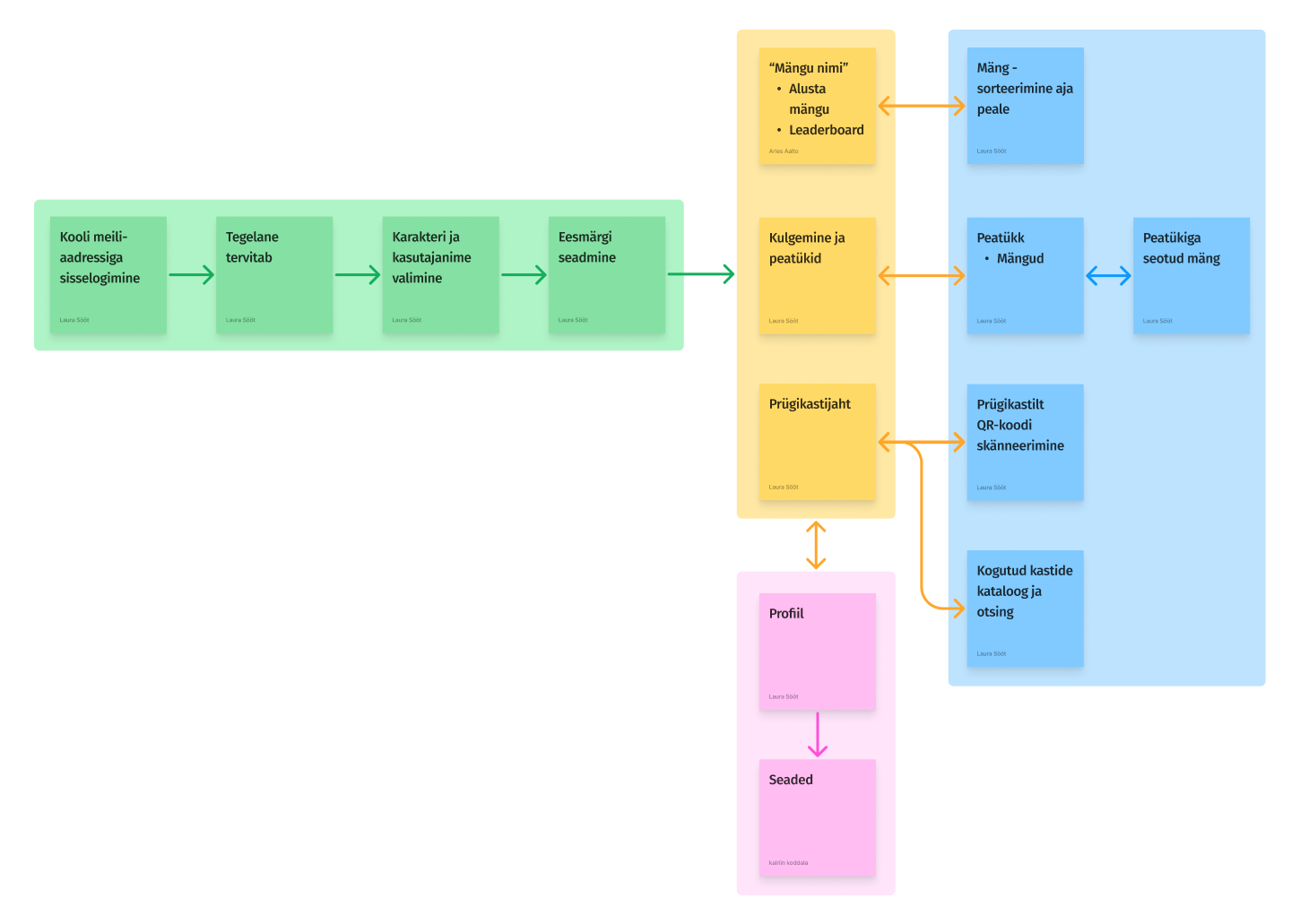Educational Games App on Recycling – An Optional Course Concept for Estonian Academy of Arts
2024 | UX
I researched the experiences of Estonian Academy of Arts students regarding waste sorting and, as a result of exciting teamwork, I designed a new app-based optional course concept. The mobile application created as a solution consists of various educational mini-games to make recycling so easy that it would feel strange not to do it.
Team
Aries Puusepp
Kairiin Koddala
Laura Sööt
My Role:
Research – desk research, interviews, observation
UX
Stage
Problem
According to the latest survey, half of Tallinn residents do not sort their household waste. This is a problem because this means that resources that could be reused end up in the incineration process. Mass incineration of waste causes global warming, which in turn worsens the quality of life on Earth.
More About the Process
Desk Research
We set out to investigate why Tallinn residents don't sort their garbage. To do this, we read articles, sorting guides, and comment sections.
We got the best insight into Estonians' attitudes towards waste sorting by reading comments left on news portals. The main problems why people don't sort turned out to be:
- Problems with storing the trash and taking it out;
- Confusion and lacking knowledge;
- Defiance and lack of motivation.
Of the three, I saw the most problems with a lack of motivation, with reasons ranging from sheer laziness to feeling that the problem is too big for an individual to solve.
Target Group
Due to time constraints, we narrowed the focus and set the target group of the study to students of the Estonian Academy of Arts. As our main mission we chose to solve the problem within the university.
Survey
We started with a survey, the aim of which was to map the current situation at EKA and recruit interviewees.
Since during my desk research I found many commenters online who did not sort simply to protest, we offered the opportunity in the survey to also mark answers such as "I am not interested in this topic." and "I do not support topics related to environmental protection." As we had hoped and expected, noone at EKA marked either of those.
However, there were various reasons for not sorting, and the most common reason, at 32 percent, „was " I can't find the right trash cans." (with yellow highlight in the image) Among the 87 respondents, only one sorted all nine given types of waste.

Interview + Observation
We organised interviews with those who left their contact information in the survey and began to plan the questions. We decided to incorporate an observation in the form of a waste sorting game into the interview.
We started the interviews by exploring how the interviewee understood the concept of waste sorting, what obstacles they had encountered while sorting, and how good they thought their own sorting skills to be. In the answers, we mainly observed the order in which the interviewee remembered the different related terms and obstacles, in order to assess what they considered more important.
Waste Sorting Game
In the middle of the interview, we conducted a waste sorting game, which consisted of two rounds:
- In the first round, we asked the interviewee to sort the trash spread out on the table into 9 predefined categories. We did not give instructions or answer questions. We asked the interviewee to think out loud.
- In the second round, we gave the interviewee a guide and asked them to make corrections using the guide if they wanted. We did this to assess the usefulness and understanding of the guides.
During the game, we observed a great deal of confusion among all interviewees, which increased during the sorting process. Before the game, they rated their knowledge rather highly, but after the game, they reflected that it was actually quite difficult for them.
Important insight: sorting with the help of the guide was still difficult because the waste items are so different and the guides don't list them all.
During the interviews, similar to the survey, it became clear that students often cannot find the right trash cans at school.
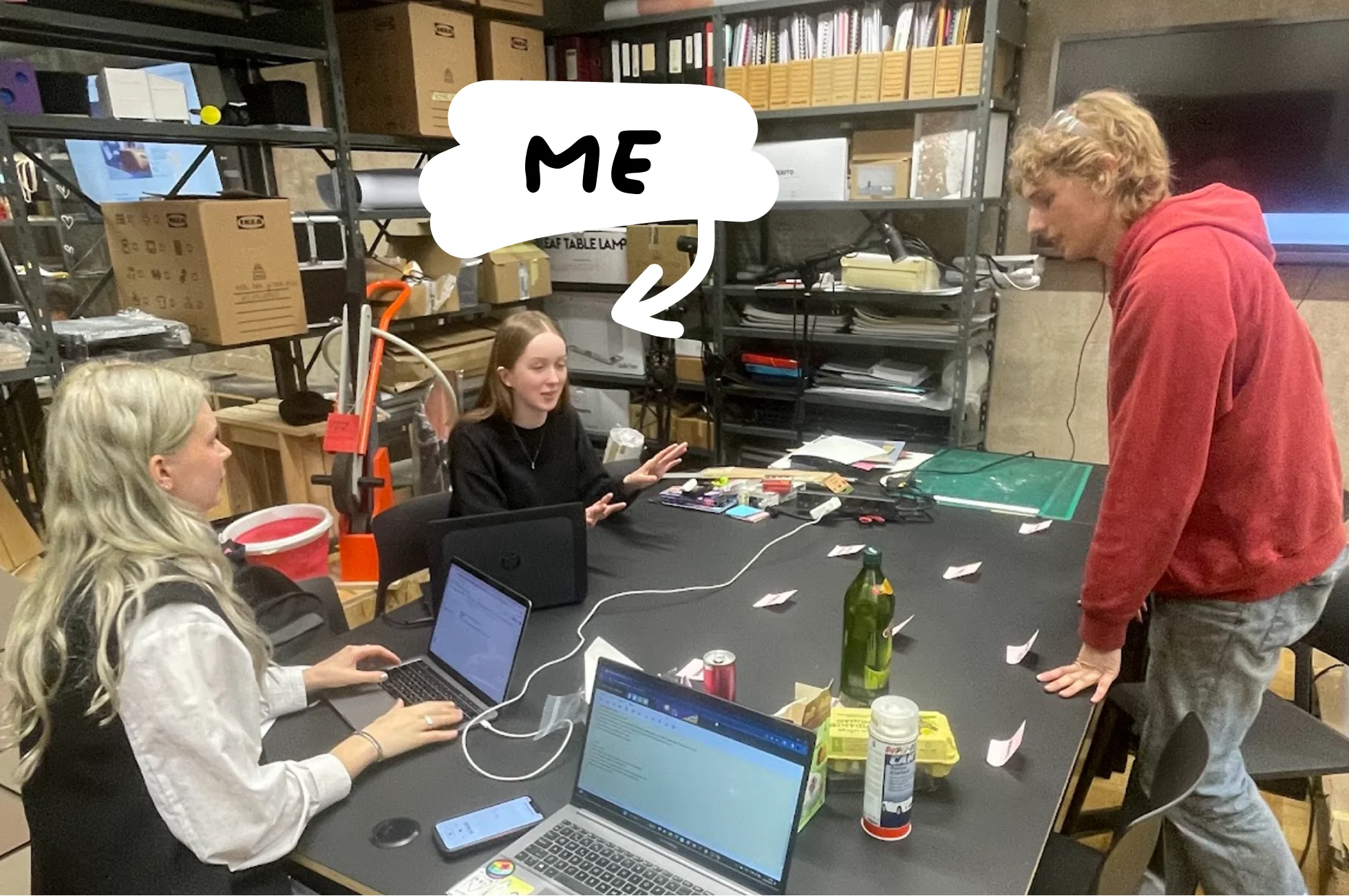
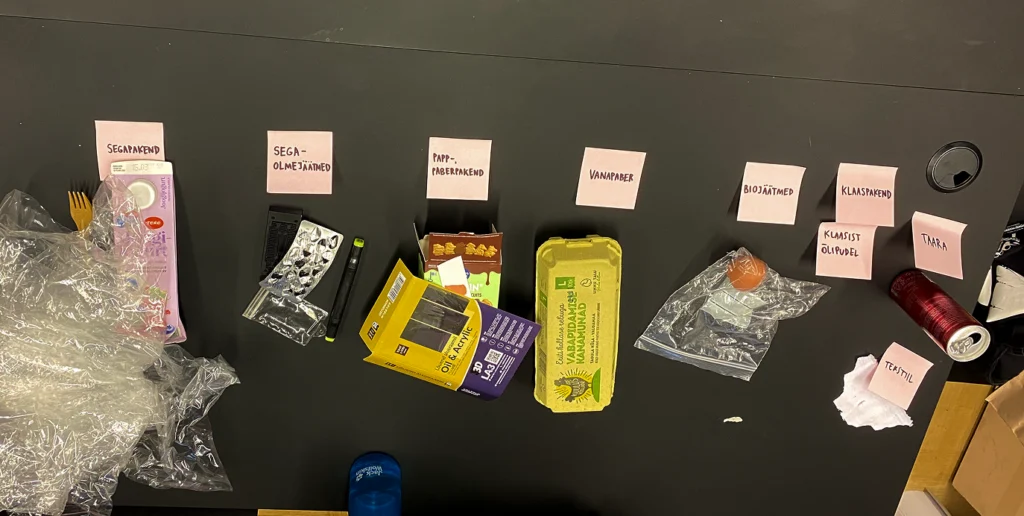
Trash Can Hunt
The concern that the school had hidden bins for various types of waste, which was already becoming a pattern, began to arouse great curiosity in us. We decided to go on a hunt.
We started looking through the departments, a tablet in hand. We marked every trash can (and its type) we saw on the corresponding floor map. If there were “local” people in the room, we asked if there were any trash cans we hadn’t noticed yet.
An interesting pattern also began to emerge on our maps: a significant majority were mixed waste bins (marked as orange on the map).

Wishcycling
Perhaps students would sort more if, instead of all those mixed waste trash cans, there were an equal number of recycling containers evenly distributed throughout the school? One might assume that if throwing trash into the mixed waste trash cans is made very easy – seemingly even encouraged – people will abandon sorting in favor of convenience.
We did some desk research and came across an interesting counter-problem known as "wishcycling". It turned out that when people are encouraged to sort too much and start doing it with great effort, they also start putting „mixed waste in other bins because "producing mixed waste is bad.”
This leads to a situation where even more garbage is incinerated than originally, because if an item of mixed waste ends up in the wrong container, it may spoil the quality of all the rest of the garbage (e.g., stain it so that it cannot be recycled).
Initial Ideas
We therefore realized that we had to find a middle ground. As a result of brainstorming, we considered different trash cans that would encourage students to think more – in these cases, throwing away trash at school would take up too much time.
Secondly, we discussed a solution where the sorting container would automatically open only the lid of the bin where the waste item has to be thrown. This would make sorting too easy – if the action doesn't require making a conscious decision anymore, people won't notice how much waste they produce.
Studios could also have screens that scan waste and guide the student to the correct bin (as shown in sketch).
In the end we had to take into account that this was a digital product design project and the end result had to include a digital product.
We shared the trash can maps we created and our thoughts/advice so far with the environmental specialist of the Estonian Academy of Arts.

Solution
We decided to approach the solution from an angle that also solves a large part of the following problems – motivation. Through increased motivation, it is possible to overcome any other obstacles.
We designed a playful optional course for the university, which could be completed by playing fun sorting-themed mini-games in the corresponding app.
What would motivate the students to learn?
- University credit points as a reward for playing;
- The optional course could be completed at any time, in any place and at one's own pace – meaning it doesn't require sitting in a classroom;
- The playful nature of the solution – sorting is easier to learn by practising than by reading instructions.
If enough games are played – that is, enough to accumulate the points needed to earn credits – the in-game sorting becomes subconscious.
The goal of the minigames is to make sorting so easy and obvious for players that it becomes unthinkable to consciously not sort.
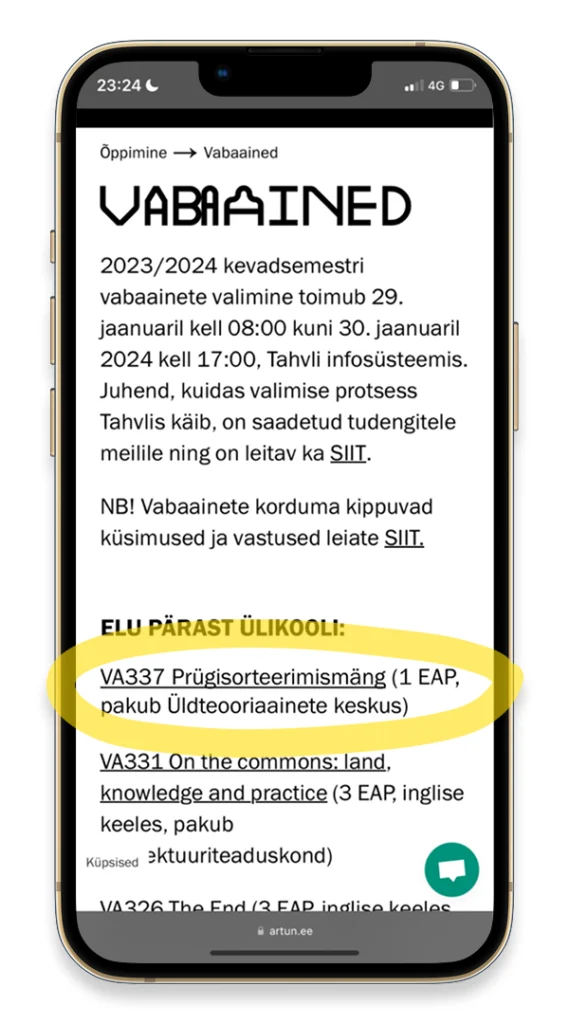
User Testing
I created a user flow, based on which we built a prototype.
Since this was a user experience project, we did not design the user interface, but focused on ensuring that the prototype conveyed the idea as clearly as possible.
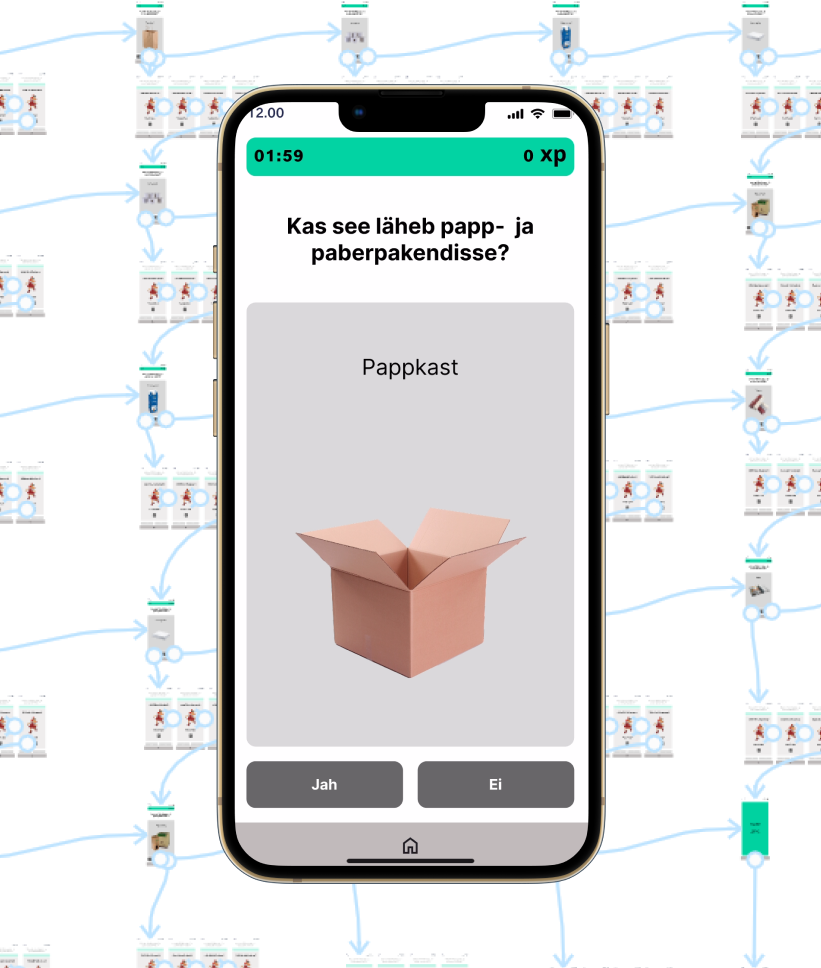
We conducted user testing at the university to see how the minigame format felt to students. We tested a cardboard and paper packaging sorting game, in which students had to choose whether the waste shown in the photo went into the cardboard and paper packaging container.
While playing, many discovered that they knew less about sorting than they thought. When they heard that the optional course could be completed on a smartphone and whenever they want, they said they would like to take the garbage sorting subject.
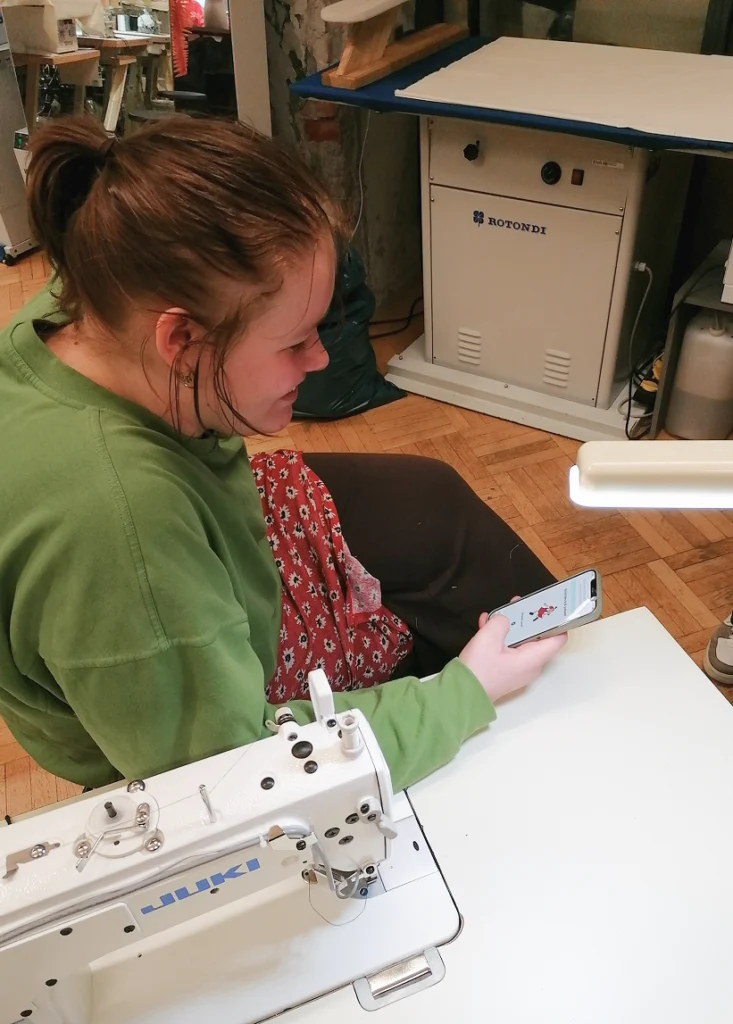
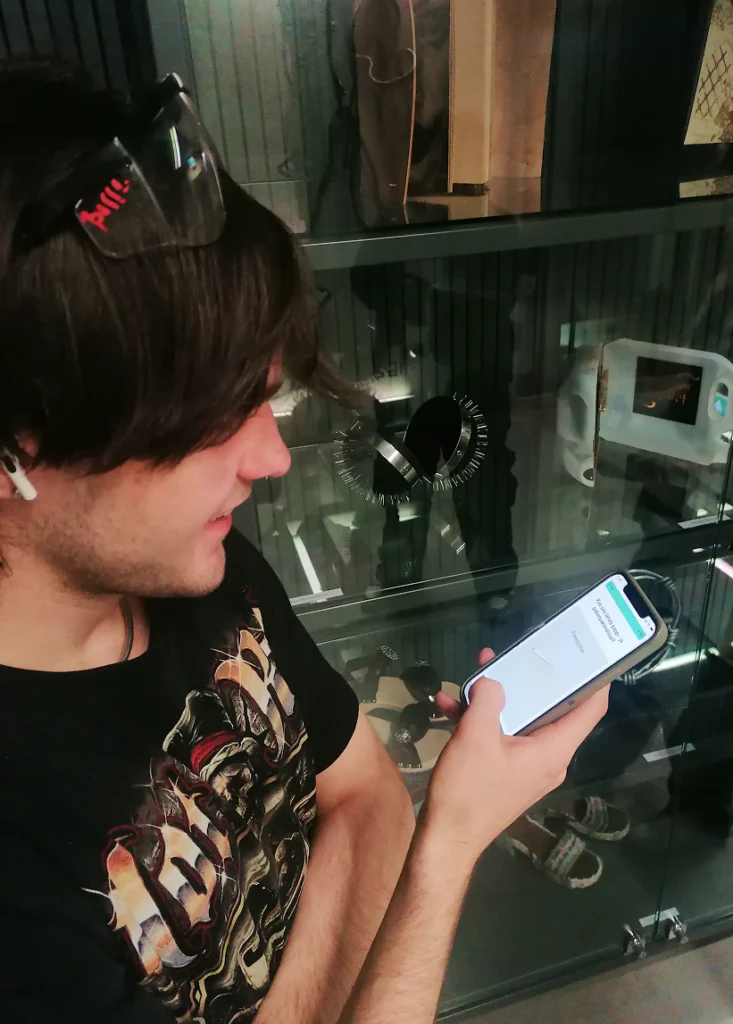
Examples of What We Learned From Tests
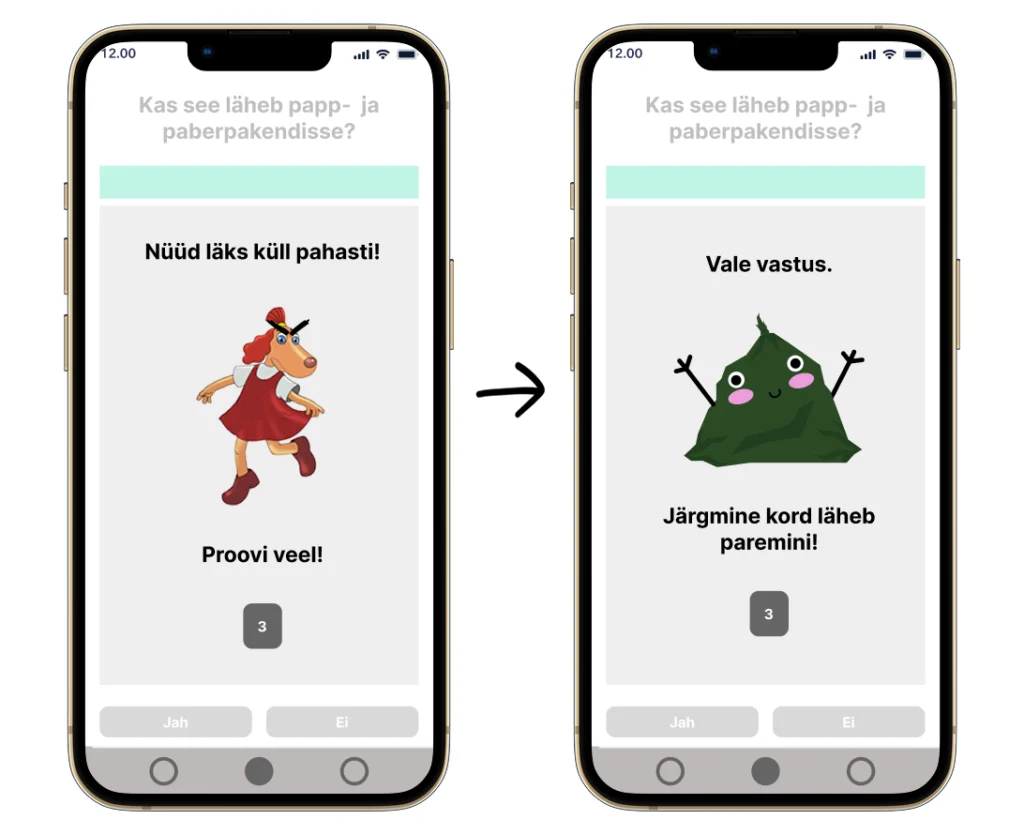
We tried to make it funny at first, but we learned that friendly and supportive feedback has a more positive effect and increases the desire to learn further.
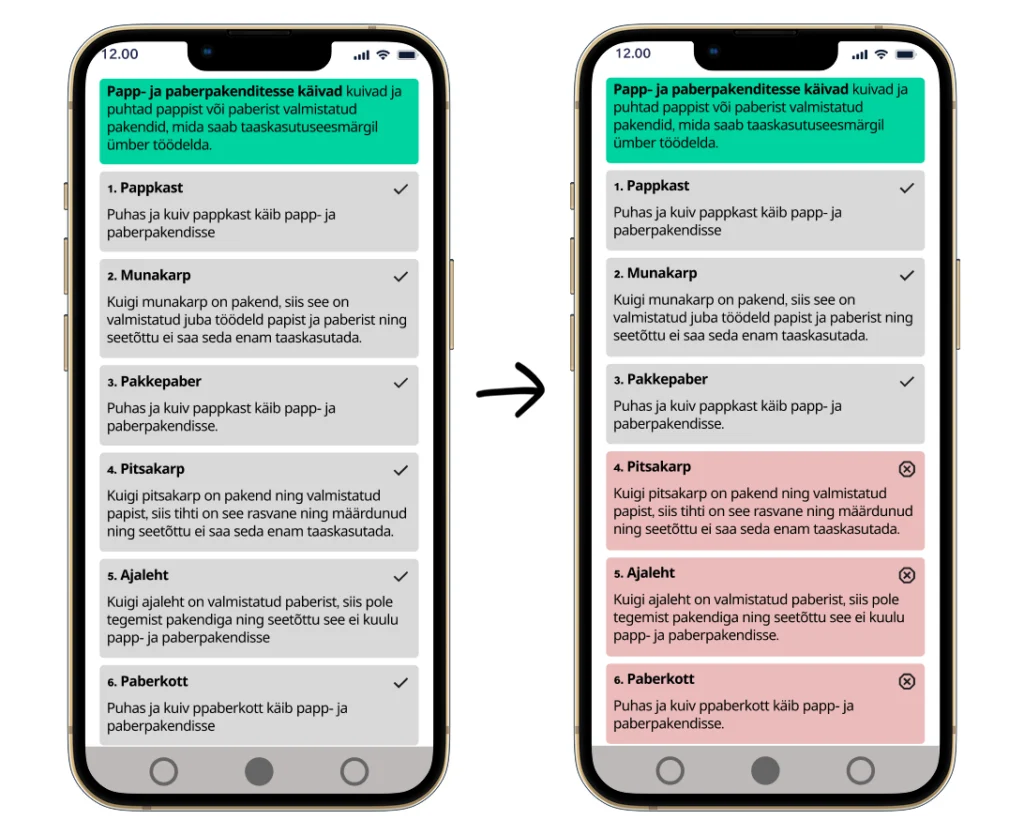
Before user testing, we only showed the correct answers at the end. Based on feedback, we also added the incorrect answers with reasons why they don't fit in this container.
Low-Fidelity Prototype
Sorting could be learned in chapters by types of waste.
Students can see their progress by chapters and points collected. Scrolling will reveal a path of topics, where the chapters would be marked by corresponding illustrations.
Every chapter includes a short theoretical overview of the waste type and various mini-games. The student can choose which games to play to collect the necessary number of points to complete the chapter and unlock the next one.
The video shows an example of a cardboard and paper packaging game, where you have to mark whether the waste goes into the cardboard and paper packaging container.
As a pastime activity you can play a sorting game where you have to direct the garbage into the correct container as it falls.
In this game, different types of waste fall from above and must be sorted correctly. The game ends when a waste item ends up in the wrong container.
Each player's best result appears on a school-wide leaderboard with their username – competition with fellow students motivates them to practice sorting.
Trash Can Hunt: Collect All School Trash Cans into Your Database.
Both the survey and the interviews revealed that EKA students often do not sort waste because they do not know where the correct trash can is located at school.
To help them notice and remember different types of trash cans, I designed a trash can hunt. To earn points, they could scan QR codes on school trash cans and collect them into their personal trash can database.
The bins would be distributed by floor in the database and could be searched for using keywords. For example, a student could type "bio" into the search box and quickly find the nearest biowaste container among the collected bins.

